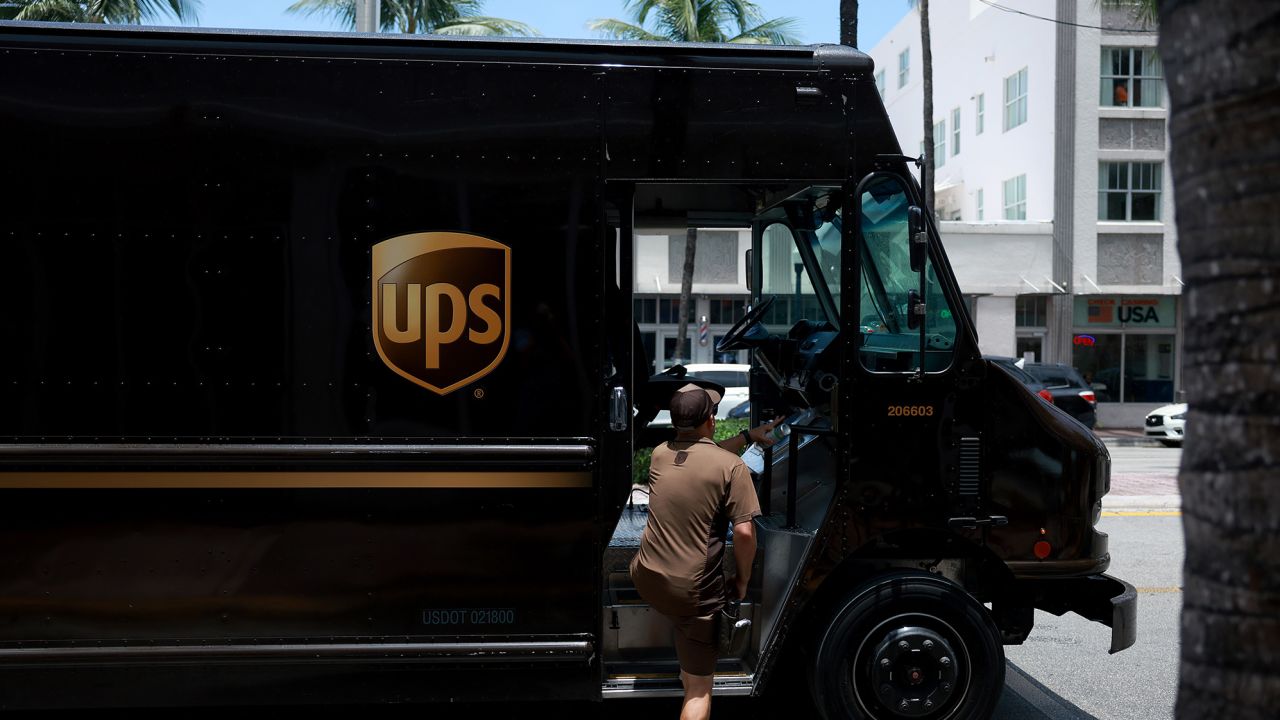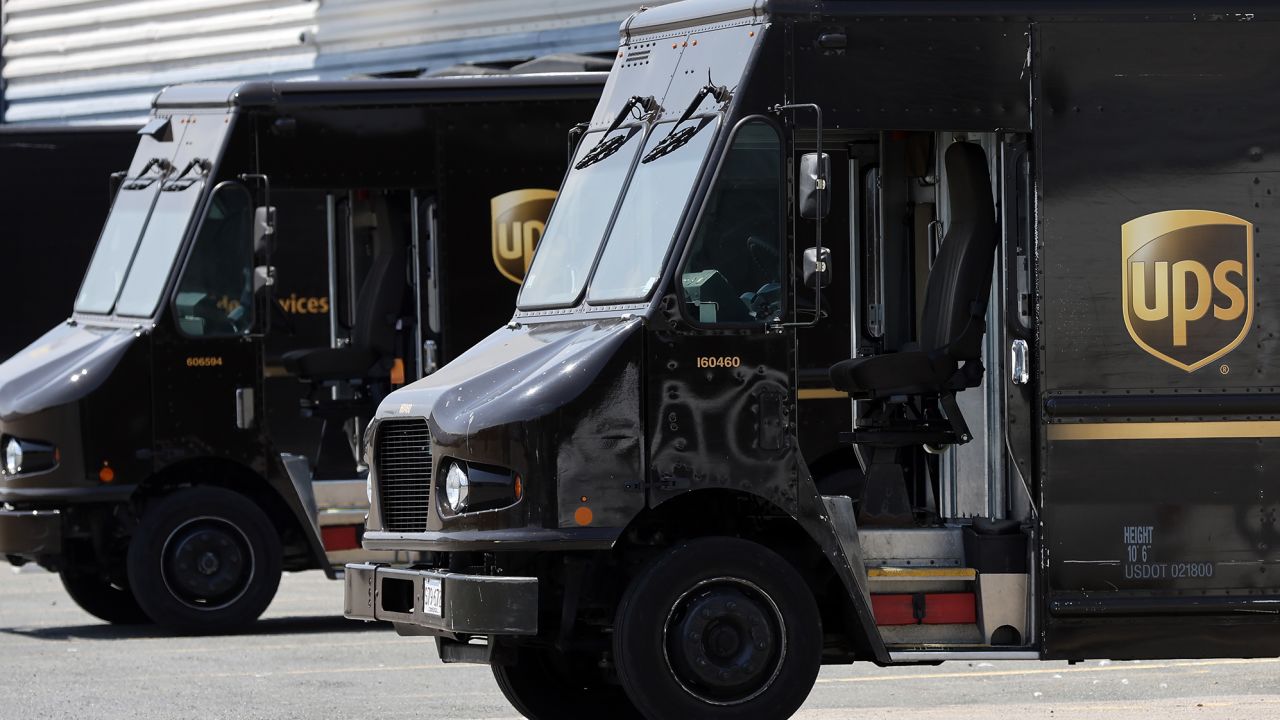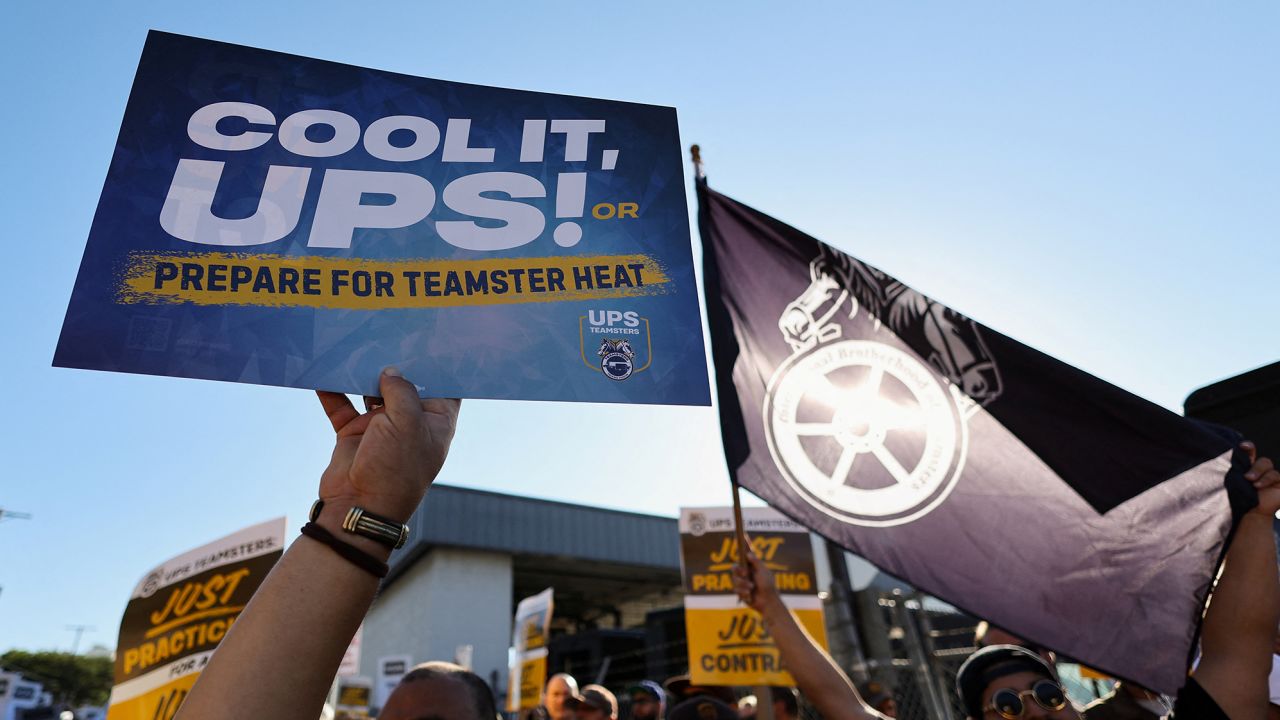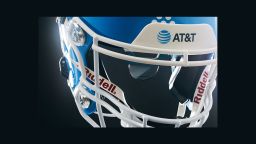August 2016 was, at the time, the planet’s hottest month on record. In Freehold, New Jersey, where Jim Klenk was driving his usual route for UPS, midday temperatures were hitting highs in the 80s and 90s.
During one of those punishing late-summer days, Klenk, who was 58, started feeling sick. He was disoriented, his wife, Theresa Klenk, recalled. He hadn’t been able to urinate all day.
Like most of America’s more than 1.5 million parcel delivery drivers, Jim drove a vehicle that lacked air conditioning. On a typical shift, he would be in and out of his truck every few minutes, spending the bulk of his time in the back cargo area, where temperatures can exceed 120 degrees, according to the Teamsters union, which represents UPS drivers.
Theresa, a nurse, said Jim didn’t want an ambulance or a trip to the ER.
Eventually, though, she managed to get him to the hospital where she worked. He was already in kidney failure by the time they arrived.
“They pulled me out and asked me what Jim’s last wishes would be,” she said.

Heatstroke, one of the most common and most deadly heat-related illnesses, had put Jim in acute renal failure, Theresa said. But he got lucky, and he was able to go home after five days in the hospital.
For Theresa, Jim’s close call was a turning point. At the time, she said, no UPS drivers wanted to speak up about the increasingly brutal conditions for fear of being reprimanded. She felt uniquely positioned to begin advocating for change.
The physics of staying cool
While it may seem surprising in the 21st century that delivery trucks would lack air conditioning, the problem of keeping drivers cool is complicated.
Unlike long-haul truckers, the people delivering packages door to door are behind the wheel for only a few minutes at a time. They’re mostly on their feet, retrieving boxes from the back and hauling them to their destination. According to UPS, drivers stop on average every three minutes — barely enough time for air-conditioning to make a dent.

But as record temperatures grip the planet — this summer was the hottest on record, by a significant margin — delivery drivers are clamoring for any relief they can get.
This year’s record heat caused dozens of deaths, filled some hospitals to pandemic levels and prompted government warnings about avoiding extended exposure to heat. Still, there are no laws in place compelling employers to protect workers from the heat.
The Occupational Safety and Health Administration, or OSHA, began the process of drafting a heat standard for workplaces nearly two years ago, and it’s not clear when, or if, those rules will be put in place.
Business groups including the US Chamber of Commerce object to such rules, arguing that the question of heat safety is too complex to apply common guidance across industries.
But labor advocates say the rules are long overdue. Officially, there were 436 workplace deaths between 2011 and 2021 due to exposure to high heat, or roughly 40 a year, according to the Bureau of Labor Statistics. Experts say those numbers grossly underestimate the number of actual deaths from heat exposure on the job.
Because heat illness can impair cognitive function, people may make mistakes on the job that appear unrelated to the temperature.
“That won’t go down as a heat-related illness if you get run over by a vehicle or crash it but it was caused by the heat,” said Jordan Barab, who served as deputy assistant secretary of OSHA from 2009 to 2017. “You have workers listed as dying from natural causes, such as heart attacks, or going home suffering from the heat, getting sick and dying there, and it might not be counted as work-related.”
Excessive heat is a problem across the parcel-delivery industry.
About a third of all US Postal Service vehicles currently have air conditioning, a spokesperson said. A FedEx representative told CNN that all vehicles owned by FedEx are air-conditioned, though the majority of its FedEx Ground fleet is operated by independent contractors.
“Safety is always our priority, and we encourage our team members and service providers across FedEx to take precautions in the hot weather by staying hydrated, taking frequent breaks, and recognizing the signs of heat-related illnesses,” FedEx said in a statement.
An Amazon spokesperson said all company-branded vehicles are air-conditioned and always have been.
UPS has in recent years implemented its own safety protocols to protect workers, including educating drivers on how to prevent overheating, providing them with cold drinks during their shift and outfitting them with hats and sleeves designed to keep the body cool.

“The health and safety of our employees is our highest priority,” a UPS spokesperson said. “We have worked with top experts in heat safety to study our working conditions and further improve our trainings and protocols to help our employees work safely — especially on hot days.”
But even with a robust heat-mitigation protocol in place, this summer’s record temperatures put severe strain on delivery drivers and others who can’t avoid being oustide. In August, the Teamsters union announced that two of its members — a UPS driver in Texas and a Kroger employee in Memphis, Tennessee — died while working in extreme heat.
“We absolutely cannot lose another sister or brother on the job,” the union said. “We will always fight for more, fight for better, and force companies … to respect and treat workers like the flesh and blood human beings that they are. We are not dispensable.”
The fight for air conditioning
Jim Klenk loved working for UPS, his employer for some 15 years. He loved his customers. He’d often bring treats for the dogs on his route. But after his hospital stay, he found the physical and emotional toll of work to be too much, Theresa said, and he opted for early retirement.
Theresa, meanwhile, was gearing up for a fight.
In July 2018, she launched a Change.org petition to rally support for installing AC in UPS trucks and vans. As signatures piled up, so did public awareness.
Theresa flew to Atlanta to meet with UPS leaders at the company’s corporate headquarters. That meeting, she said, didn’t go far, and she felt executives weren’t taking her petition seriously.
She wasn’t deterred.
“I knew nothing was going to change unless somebody kept it going.”

(A UPS spokesperson said he couldn’t comment on the substance of that meeting and noted that the representative Klenk met with is no longer with the company.)
Her petition eventually gained more than 1.3 million signatures.
As the pandemic took hold in 2020, prompting consumers to order an unprecedented number of packages online, public concern for drivers’ well-being grew.
A new contract
Jim and Theresa took their campaign to Teamster rallies and began to meet with union leaders.
It seemed clear to them once they began raising the issue of excessive heat that everyone had a story.
“This has been quite clear for years and years, and nobody spoke up,” Theresa said. “But now they were ready to speak up.”
She credits the current Teamsters leadership, elected in 2022, for not only taking the issue seriously but for encouraging other workers who’d experienced heat-related illness to come forward.

The Teamsters and UPS held tense contract negotiations over the summer, with the air-conditioning question becoming a central issue. After marathon talks to avoid a strike that would have halted all UPS shipments, on July 25, the union reached a deal that Teamsters President Sean O’Brien called “the best contract in the history of UPS.”
The union achieved many of its goals, including across-the-board pay raises. Although UPS did not agree to retrofit its existing fleet with air conditioning, it did agree to purchase only air-conditioned vans starting next year.
UPS is also adding heat shields and forced-air induction systems to help cool the back of the truck, where the heat can pose the biggest threat to drivers.
It was a bittersweet victory for Jim and Theresa Klenk.
“There is more work to be done,” Theresa says. She wants to see older trucks retrofitted with AC, and she doesn’t have plans to quit being a voice for worker safety.
Jim, his wife said, is very happy that their campaign has finally come to this point.
“But, you know, I get sad about it, too … This was a job that he truly loved.”
— CNN’s Clare Duffy contributed to this report.









